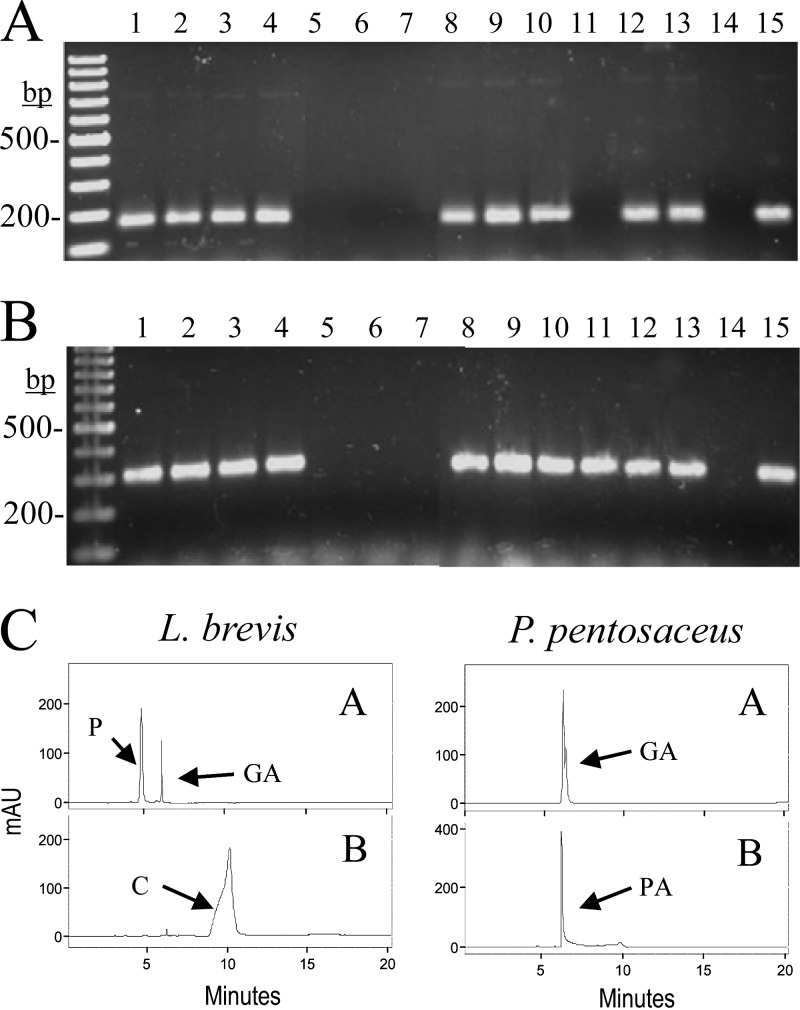Fig 7.
Gallate and protocatechuate decarboxylase activity in lactic acid bacteria. (A and B) PCR amplification of the B and C subunits of putative gallate decarboxylases. Chromosomal DNA from the following strains was used for PCR amplification with oligonucleotides 450 and 451 (A) or oligonucleotides 448 and 449 (B) to amplify 158 bp or 300 bp of the B or C subunit, respectively: E. faecium CECT 410T (lane 1), E. faecium CECT 4102 (lane 2), L. brevis CECT 4121T (lane 3), L. brevis CECT 5354 (lane 4), L. hilgardii RM62 (lane 5), L. hilgardii RM63 (lane 6), L. mesenteroides CECT 219T (lane 7), L. pentosus DSM 20314T (lane 8), L. plantarum ATCC 14917T (lane 9), L. plantarum WCFS1 (lane 10), L. sakei DSM 15831T (lane 11), O. oeni CECT 4100T (lane 12), O. oeni RM1 (lane 13), P. pentosaceus CECT 4695T (lane 14), and S. gallolyticus UCN34 (lane 15). PCR products were subjected to gel electrophoresis and stained with Gel Red. Left lane, 100-bp molecular size ladder. Numbers indicate some of the molecular sizes. (C) HPLC chromatograms of supernatants from lactic acid bacteria. The L. brevis CECT 5354 and P. pentosaceus CECT 4695T strains were grown in RMP medium containing 3 mM gallic acid (A) or protocatechuic acid (B) for 10 days. The gallic acid (GA), protocatechuic acid (PA), pyrogallol (P), and catechol (C) detected are indicated. Chromatograms were recorded at 280 nm.

